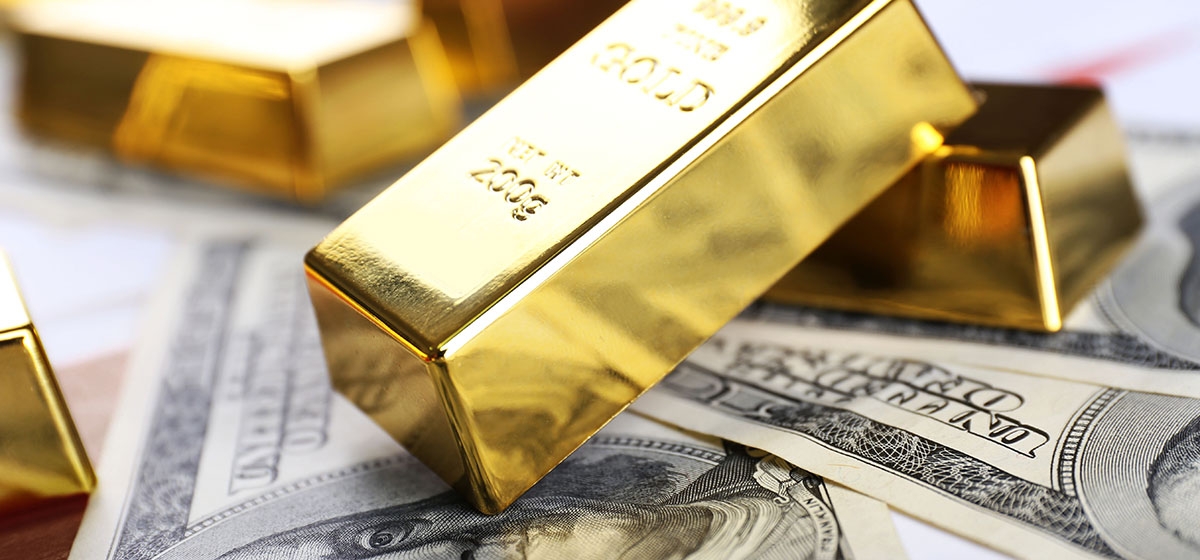Why Gold Had to Go

The “gold standard,” which prevailed in the developed world for many decades, simply means that some fraction of a country’s paper currency has to be backed by—that is, convertible into—gold. In the U.S. that fraction was 40 percent.
Since a government on the gold standard can’t print money without increasing its gold reserves, society-destroying events like hyperinflation simply can’t happen. Citizens rarely trust their governments not to do stupid things, so the gold standard was in place to prevent the stupidest of them.
During ordinary economic environments, the gold standard helped preserve economic stability. Unfortunately, during financial panics, deep recessions and depressions, the gold standard was problematic.
Consider the plight of Germany in the 1930s. The Depression hit Germany hard. The country needed to increase its budget to pay unemployment compensation (and prevent a Communist revolution), and it needed to stimulate the German economy, which was tanking badly.
If Germany reduced interest rates to stimulate its economy, foreign capital would flee, foreign loans would be impossible to secure, and people would start converting German currency into gold, depleting gold reserves and making it impossible for Germany to increase the money supply. On the other hand, if Germany raised rates (to keep capital from fleeing and to hold onto its gold reserves), the German economy would likely get even worse.
Eventually, Germany abandoned the gold standard, an act that was both irresponsible (it destroyed what was left of the country’s fiscal reputation) and utterly essential. Soon Britain and the U.S. would follow suit, largely for the same reasons.
It’s easy in retrospect to blame the 1930s Fed for raising rates during the deep recession of 1930-33, but at the time it seemed the least awful of the alternatives. If the U.S. had reduced rates, capital would have fled the country, gold reserves would have been depleted, and the ability of the government to increase the money supply would thereby have been reduced. The problem wasn’t dumb Fed officials, but the gold standard.
Most countries went back on the gold standard in one form or another after the Depression, but following the collapse of the Bretton Woods protocols the world switched to fiat money, backed by nothing but confidence in governments and central bankers.
A similar dilemma was presented for policymakers by the stressed U.S. banking system. During the boom times of the 1920s, brokers had made huge numbers of margin loans to eager stock buyers. When the market collapsed and the margin calls went out, more stocks had to be sold, driving the market down further. Many brokerages went bust, failing to repay bank loans they had re-loaned as margin loans.
At the same time that brokers’ loans went bad, farmers’ loans went bad, and soon thousands of small-town banks closed their doors. This led to a broader worry among the public about the solvency of other banks. After all, how could an ordinary person know whether a bank was solvent or not?
The result, as Bernanke claimed, was that roughly 9,000 U.S. banks eventually closed their doors. But at the time there were tens of thousands of banks in the U.S. and the failed banks represented a very small percentage of banking assets—indeed, not a single money center bank failed.
Nonetheless, confidence in banks was evaporating among depositors and so, to restore that confidence, Roosevelt imposed the famous “banking holiday” 36 hours after he took office in 1933. Later, banks that were considered to be sound by the government (those banks controlled 90 percent of all deposits) were allowed to reopen.
In his very first Fireside Chat, Roosevelt explained what a bank run was, why he had imposed the “holiday,” and how decisions would be made to reopen the banks. As Will Rogers put it, “the President took a dry subject… and made everyone understand it, even the bankers.” The public took the closings calmly, and when the banks reopened deposits dramatically outnumbered withdrawals.
In short, regarding central bankers’ failure to inject more liquidity into the economy in the early 1930s, they were constrained not by stupidity but by the gold standard. And in terms of the so-called “collapse” of the banking system, there was no collapse at all, only a brief lack of confidence by the public which, after all, had no transparency into which banks were sound (the vast majority) and which were not.
One important lesson modern central bankers should have taken from the experience of the 1930s, but did not, is that it is confidence in the system that matters, not specific policy actions. J. P. Morgan restored confidence in the markets in 1907, FDR restored confidence in the banks in 1933, and Mario Draghi restored confidence in the EU economy in 2012 (“we are ready to do whatever it takes”). What the modern Fed did following the (unnecessary) collapse of Lehman Brothers was to incite even more panic.
The first lesson of the Depression, to be sure, is that once the system begins to tilt toward panic, central banks need to step in vigorously, not timidly. But the second lesson of the Depression is that once the panic has passed the Fed needs to go on a long vacation.
The modern Fed learned the first lesson in spades, intervening vigorously following the collapse of Lehman. Unfortunately, the second lesson went right over their heads. During and following the Financial Crisis the Fed spent its time fighting the last war, not merely intervening vigorously at the moment of panic, but continuing to intervene vigorously for another decade. The result was government-induced secular stagnation
.
Next week we’ll shine a stark light on the many failings of today’s central bankers, by comparison with which the central bankers of the 1930s were mental giants.





